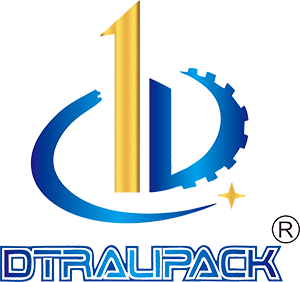Streamlining Your Packaging Process with a Case Sealer Carton: Optimizing Efficiency and Cost-Effectiveness
Time:
2025-06-19 09:45
Source:
Streamlining Your Packaging Process with a Case Sealer Carton
In the world of manufacturing and packaging, efficiency is crucial. Businesses are continuously looking for ways to optimize their operations, minimize costs, and maintain high standards of quality. A case sealer carton is an indispensable tool in this quest for improvement. By automating the sealing process, companies can streamline their packaging procedures, enhance productivity, and eliminate the risks associated with manual sealing. This article delves into the myriad benefits of utilizing case sealers, explores different types available, and provides insights on how to implement them effectively within your operations.
Understanding the Importance of Efficient Packaging
Efficient packaging is not just about enclosing a product; it's about ensuring that products reach their destinations safely and cost-effectively. With consumer demands changing rapidly and e-commerce booming, manufacturers must adapt to these challenges. Efficient packaging helps businesses:
- **Reduce labor costs**: Automated processes minimize the need for manual labor.
- **Enhance product protection**: Properly sealed packages are less likely to be damaged during transit.
- **Improve shipping speed**: Efficient packaging allows for faster processing times, getting products to customers more quickly.
- **Optimize space utilization**: Well-sealed packages can be stacked and stored more effectively, maximizing warehouse space.
What is a Case Sealer Carton?
A case sealer carton is a machine designed specifically to seal boxes, typically using adhesive tape or other sealing methods. These machines can significantly improve the efficiency of the packaging process by automating repetitive tasks that would otherwise require substantial manual labor. They are widely used across various industries, from food and beverage to electronics and pharmaceuticals.
The Mechanics Behind Case Sealers
Understanding how case sealers operate can help businesses appreciate their value. Most case sealers work on a simple principle: they guide the box through a series of automated processes that apply tape or adhesive to seal the top and bottom flaps securely. This process typically involves:
- **Box forming**: The machine forms the box and prepares it for sealing.
- **Product placement**: The products to be packaged are placed inside the box.
- **Sealing**: The machine applies tape or adhesive to seal the box securely.
- **Ejection**: The sealed box is ejected for packing or shipping.
Types of Case Sealers
Choosing the right case sealer for your operation is essential. Various types of case sealers are available, catering to different needs and production levels. Here are some common types:
1. Manual Case Sealers
Manual case sealers require an operator to place the box in position and initiate the sealing process. They are ideal for small operations or businesses that do not require high-volume sealing.
2. Semi-Automatic Case Sealers
Semi-automatic sealers combine manual and automated processes. Operators need to place the box in the machine, but the sealing process is automated. These machines are suitable for medium-sized operations looking to improve efficiency.
3. Fully Automatic Case Sealers
Fully automatic case sealers are designed for high-volume operations. These machines can automatically form boxes, fill them with products, and seal them without any manual intervention. They are perfect for businesses with large-scale packaging needs.
Benefits of Using a Case Sealer Carton
Investing in a case sealer carton brings numerous benefits that can significantly impact your operations. Here are some key advantages:
1. Increased Efficiency
By automating the sealing process, case sealers drastically reduce the time it takes to package products. This increased efficiency allows businesses to handle larger volumes of product without increasing labor costs.
2. Cost Reduction
Although there is an initial investment in case sealing equipment, the long-term cost savings are substantial. Automation reduces labor costs and minimizes packaging materials wasted due to improper sealing.
3. Enhanced Quality Control
Case sealers ensure consistent sealing quality, which is crucial for maintaining product integrity during shipping. Automated processes reduce the risk of human error, leading to fewer instances of damaged goods.
4. Flexibility and Adaptability
Modern case sealers can handle various box sizes and sealing methods, making them adaptable to changing production needs. This flexibility ensures businesses can pivot quickly in response to market demands.
5. Improved Safety
Reducing the reliance on manual labor for packaging tasks minimizes the risk of workplace injuries. Additionally, automated machinery typically operates with safety features designed to protect workers.
Implementing a Case Sealer Carton in Your Operations
Integrating a case sealer into your packaging process requires careful planning and execution. Here are some steps to ensure a successful implementation:
1. Assess Your Needs
Before investing in a case sealer, conduct a thorough assessment of your packaging needs. Consider factors such as production volume, box sizes, and sealing methods. This evaluation will help you choose the right type of sealer for your operation.
2. Select the Right Equipment
Choose a case sealer that aligns with your operational requirements. Evaluate different brands and models, reading reviews and seeking recommendations from industry peers to ensure you make an informed decision.
3. Train Your Team
Investing in technology is just one part of the solution. Properly training your team on how to operate and maintain the case sealer is essential for maximizing its benefits. Ensure that operators understand how to troubleshoot common issues and maintain safety protocols.
4. Monitor Performance
After implementation, continuously monitor the performance of your case sealer. Gather data on packaging speed, quality control, and labor costs to assess the effectiveness of the machine. This information can help you make necessary adjustments to optimize your process.
5. Embrace Continuous Improvement
The packaging landscape is ever-evolving. Stay updated on the latest technologies and best practices in packaging to ensure your operations remain efficient. Engage with industry networks, attend trade shows, and participate in training programs to keep your knowledge current.
FAQs About Case Sealers and Packaging Processes
1. What is the average cost of a case sealer carton?
The cost of a case sealer carton can range from a few thousand dollars for manual models to tens of thousands for fully automatic systems. The price depends on factors such as the machine's speed, size, and features.
2. How do I determine the right case sealer for my business?
Assess your production volume, box sizes, and sealing preferences. Consult with suppliers to find a machine that fits your specific needs, and consider future growth.
3. Can case sealers accommodate different box sizes?
Many modern case sealers are designed to handle various box sizes, with adjustable features to accommodate changes in packaging needs.
4. How can I ensure that my case sealer operates efficiently?
Regular maintenance, proper training for operators, and continuous monitoring of performance are key to ensuring your case sealer operates efficiently.
5. Are there any safety concerns with using case sealers?
While case sealers generally enhance workplace safety by reducing manual labor, it's essential to follow safety protocols and train operators on safe machine operation.
Conclusion
In conclusion, streamlining your packaging process with a case sealer carton can lead to significant improvements in efficiency, cost-effectiveness, and product integrity. By understanding the different types of case sealers available and their benefits, businesses can make informed decisions that enhance their packaging processes. With the right implementation and a commitment to continuous improvement, manufacturers can elevate their operations, leading to better outcomes and increased customer satisfaction. Embracing automation in packaging is not merely a trend; it's a strategic move towards a more productive and competitive future.
Case Sealer Carton
News
2025-06-19



